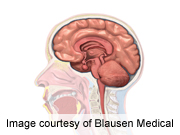
MONDAY, Sept. 15, 2014 (HealthDay News) — Key connections between brain networks seem to mature more slowly in young people with attention deficit hyperactivity disorder (ADHD), according to a new study.
These connections within and between certain brain networks control internally directed thought, such as daydreaming, and influence the ability to focus on external tasks. This slower development of these important connections could shed light on why those with ADHD are easily distracted or have trouble staying focused, the researchers said.
“It is particularly noteworthy that the networks we found to have lagging maturation in ADHD are linked to the very behaviors that are the symptoms of ADHD,” said the study’s lead author, Dr. Chandra Sripada, an assistant professor and psychiatrist at the University of Michigan in Ann Arbor.
The researchers said their findings might one day help doctors use brain scans to diagnose ADHD and track how well patients respond to treatment.
“We and others are interested in understanding the neural mechanisms of ADHD in hopes that we can contribute to better diagnosis and treatment,” Sripada said in a university news release. “The results of this study set the stage for the next phase of this research, which is to examine individual components of the networks that have the maturational lag.”
The goal is “to examine this phenomenon in a more fine-grained way that might lead us to a true biological marker, or neuromarker, for ADHD,” she added.
ADHD, which affects 3 to 5 percent of American children, is more common in boys than girls, according to the U.S. Institutes of Health. Kids with the disorder are unusually restless and have difficulty controlling their behavior, making it hard to succeed academically and socially.
Using brain imaging technology called functional MRI, the researchers scanned the brains of 275 children and teens with ADHD and 481 young people without the neurobehavioral disorder. They identified key connections between brain networks that took longer to mature in the brains of the kids with ADHD.
The study, published Sept. 15 in the Proceedings of the National Academy of Sciences, found slower development of connections within the internally focused network, called the default mode network. A lag was also identified in the development of connections between the default mode network and two networks that process externally focused tasks, also known as task-positive networks.
The study authors said the methods used in this study could also be used to investigate other disorders involving problems with brain connectivity, such as autism and schizophrenia.
More information
The U.S. National Institute of Mental Health has more on ADHD.
Copyright © 2025 HealthDay. All rights reserved.

